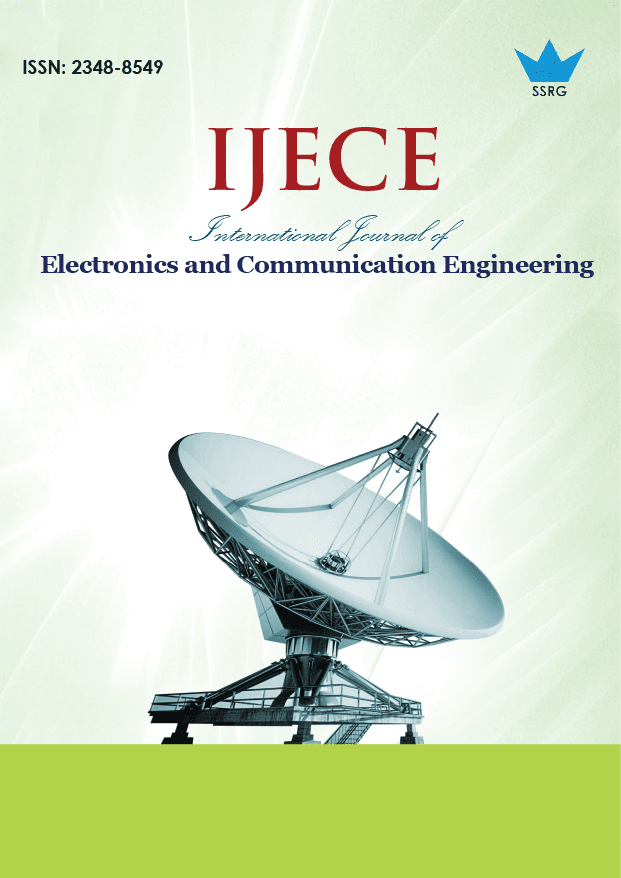Advanced Remaining Useful Life (RUL) Predictions in Aircraft Maintenance Using Deep Learning

| International Journal of Electronics and Communication Engineering |
| © 2025 by SSRG - IJECE Journal |
| Volume 12 Issue 10 |
| Year of Publication : 2025 |
| Authors : Sakthivel Janarthanan, A. Anthonisan |
How to Cite?
Sakthivel Janarthanan, A. Anthonisan, "Advanced Remaining Useful Life (RUL) Predictions in Aircraft Maintenance Using Deep Learning," SSRG International Journal of Electronics and Communication Engineering, vol. 12, no. 10, pp. 147-162, 2025. Crossref, https://doi.org/10.14445/23488549/IJECE-V12I10P113
Abstract:
Accurate prediction of Remaining Useful Life (RUL) is critical for ensuring safety, reducing maintenance costs, and improving reliability in aircraft engines and other high-value industrial machinery. This paper introduces FusionRUL-Net, a novel hybrid deep learning architecture that combines multi-scale 1D Convolutional Neural Networks (CNNs) with Transformer-based encoder blocks for robust RUL estimation using the CMAPSS dataset. Unlike traditional models that rely solely on recurrent layers or tree-based ensembles, FusionRUL-Net leverages localized temporal feature extraction via CNNs and global dependency modelling via multi-head self-attention in Transformers. A Gated Fusion Module is used to adaptively blend CNN and Transformer outputs, enabling the model to focus on both short-term fluctuations and long-term degradation trends. To evaluate the proposed model, a comprehensive comparison was conducted with nine state-of-the-art baselines, including LSTM, BiLSTM-Attention, CNN-LSTM, XGBoost, and the hybrid XGBoost-BiLSTM. FusionRUL-Net achieved an impressive accuracy of 97.23%, outperforming the best baseline (XGBoost-BiLSTM), which achieved 94.76%. It also recorded the lowest RMSE (9.81), MAE (6.77), and the highest R² score (0.96). These results demonstrate the model’s superior capability to capture multivariate sensor degradation patterns across varying operational conditions. The architecture is also optimized for deployment with acceptable inference latency (1.63ms/sample), making it viable for real-time applications. This work advances state-of-the-art prognostics by introducing a scalable, interpretable, and highly accurate hybrid model with strong potential for future adaptation in real-world predictive maintenance systems across aviation and other safety-critical domains.
Keywords:
Remaining Useful Life, RUL Prediction, CMAPSS, Prognostics, Hybrid Deep Learning, CNN, Transformer, Attention Mechanism, Temporal Modelling, Sensor Fusion.
References:
[1] Mahrukh Iftikhar et al., “A Deep Learning Approach to Optimize Remaining Useful Life Prediction for Li-ion Batteries,” Scientific Reports, vol. 14, pp. 1-14, 2024.
[CrossRef] [Google Scholar] [Publisher Link]
[2] Iordanis Tseremoglou, and Bruno F. Santos, “Condition-Based Maintenance Scheduling of an Aircraft Fleet under Partial Observability: A Deep Reinforcement Learning approach,” Reliability Engineering & System Safety, vol. 241, pp. 1-20, 2024.
[CrossRef] [Google Scholar] [Publisher Link]
[3] Begum Ay Ture et al., “Stacking-based Ensemble Learning for Remaining Useful Life Estimation,” Soft Computing, vol. 28, pp. 1337-1349, 2024.
[CrossRef] [Google Scholar] [Publisher Link]
[4] Zhihao Zhou et al., “An Aircraft Engine Remaining Useful Life Prediction Method based on Predictive Vector Angle Minimization and Feature Fusion Gate Improved Transformer Model,” Journal of Manufacturing Systems, vol. 76, pp. 567-584, 2024.
[CrossRef] [Google Scholar] [Publisher Link]
[5] Abbas Al-Refaie, Majd Al-atrash, and Natalija Lepkova, “Prediction of the Remaining Useful Life of a Milling Machine using Machine Learning,” MethodsX, vol. 14, pp. 1-13, 2025.
[CrossRef] [Google Scholar] [Publisher Link]
[6] Yuzhao Luo et al., “Remaining Useful Life Prediction for Stratospheric Airships based on a Channel and Temporal Attention Network,” Communications in Nonlinear Science and Numerical Simulation, vol. 143, 2025.
[CrossRef] [Google Scholar] [Publisher Link]
[7] Zhaohui Yang et al., “Remaining Useful Life Prediction Approach for Aviation Bearings Based on Multigenerator Generative Adversarial Network and CBAM,” IEEE Transactions on Instrumentation and Measurement, vol. 74, pp. 1-9, 2025.
[CrossRef] [Google Scholar] [Publisher Link]
[8] Jilles Andringa et al., “Counterfactual Explanations for Remaining Useful Life Estimation within a Bayesian Framework,” Information Fusion, vol. 118, pp. 1-15, 2025.
[CrossRef] [Google Scholar] [Publisher Link]
[9] Xu Xinyao et al., “A Global Attention based Gated Temporal Convolutional Network for Machine Remaining Useful Life Prediction,” Reliability Engineering & System Safety, vol. 260, 2025.
[CrossRef] [Google Scholar] [Publisher Link]
[10] Zhiqiang Peng et al., “Remaining Useful Life Prediction for Aircraft Engines under High-Pressure Compressor Degradation Faults Based on FC-AMSLSTM,” Aerospace, vol. 11, no. 4, pp. 1-24, 2024.
[CrossRef] [Google Scholar] [Publisher Link]
[11] Jie Wang et al., “A Novel Remaining Useful Life Prediction Method under Multiple Operating Conditions based on Attention Mechanism and Deep Learning,” Advanced Engineering Informatics, vol. 64, 2025.
[CrossRef] [Google Scholar] [Publisher Link]
[12] Abdeltif Boujamza, and Saâd Lissane Elhaq, “Optimizing Remaining Useful Life Predictions for Aircraft Engines: A Dilated Recurrent Neural Network Approach,” IFAC-PapersOnLine, vol. 58, no. 13, pp. 811-816, 2024.
[CrossRef] [Google Scholar] [Publisher Link]
[13] You Keshun, Qiu Guangqi, and Gu Yingkui, “Optimizing Prior Distribution Parameters for Probabilistic Prediction of Remaining Useful Life using Deep Learning,” Reliability Engineering & System Safety, vol. 242, 2024.
[CrossRef] [Google Scholar] [Publisher Link]
[14] Fan Wang et al., “A Deep-Learning Method for Remaining Useful Life Prediction of Power Machinery via Dual-Attention Mechanism,” Sensors, vol. 25, no. 2, pp. 1-19, 2020.
[CrossRef] [Google Scholar] [Publisher Link]
[15] Chenchen Wu et al., “A Deep Parallel Spatiotemporal Network Based on Feature Cross Fusion for Remaining Useful Life Prediction of Aero Engine,” IEEE Transactions on Instrumentation and Measurement, vol. 74, pp. 1-13, 2025.
[CrossRef] [Google Scholar] [Publisher Link]
[16] Juseong Lee, and Mihaela Mitici, “Deep Reinforcement Learning for Predictive Aircraft Maintenance using Probabilistic Remaining-Useful-Life Prognostics,” Reliability Engineering & System Safety, vol. 230, pp. 1-14, 2023.
[CrossRef] [Google Scholar] [Publisher Link]
[17] Sizhe Deng, and Jian Zhou, “Prediction of Remaining Useful Life of Aero-engines Based on CNN-LSTM-Attention,” International Journal of Computational Intelligence Systems, vol. 17, pp. 1-12, 2024.
[CrossRef] [Google Scholar] [Publisher Link]
[18] Qi Liu et al., “Enhancing Aircraft Engine Remaining Useful Life Prediction via Multiscale Deep Transfer Learning With Limited Data,” Journal of Computational Design and Engineering, vol. 11, no. 1, pp. 344-355, 2024.
[CrossRef] [Google Scholar] [Publisher Link]
[19] Yujie Cheng et al., “A Health State-Related Ensemble Deep Learning Method for Aircraft Engine Remaining Useful Life Prediction,” Applied Soft Computing, vol. 135, 2023.
[CrossRef] [Google Scholar] [Publisher Link]
[20] Slawomir Szrama, and Tomasz Lodygowski, “Aircraft Engine Remaining Useful Life Prediction using Neural Networks and Real-Life Engine Operational Data,” Advances in Engineering Software, vol. 192, 2024.
[CrossRef] [Google Scholar] [Publisher Link]

 10.14445/23488549/IJECE-V12I10P113
10.14445/23488549/IJECE-V12I10P113